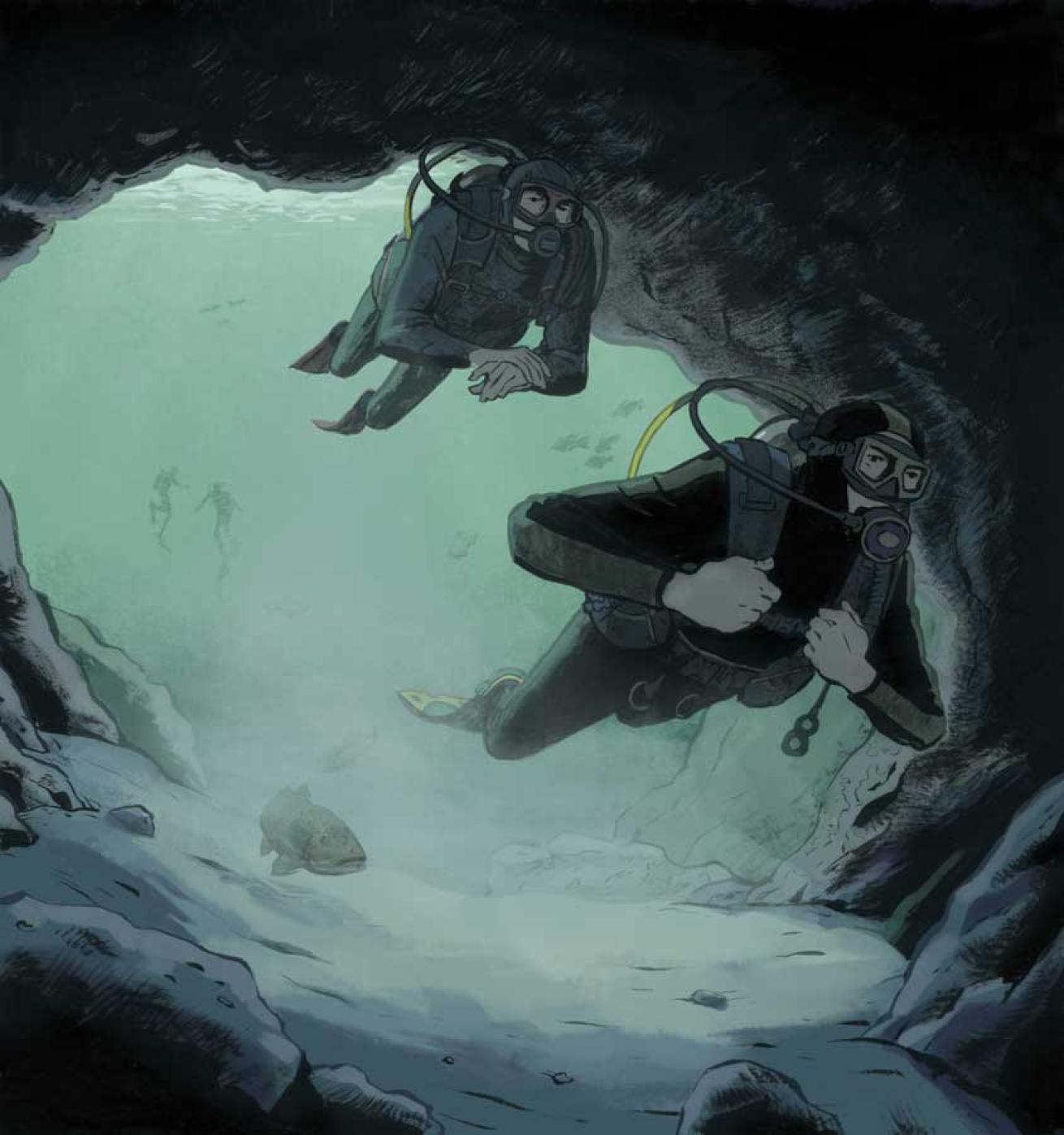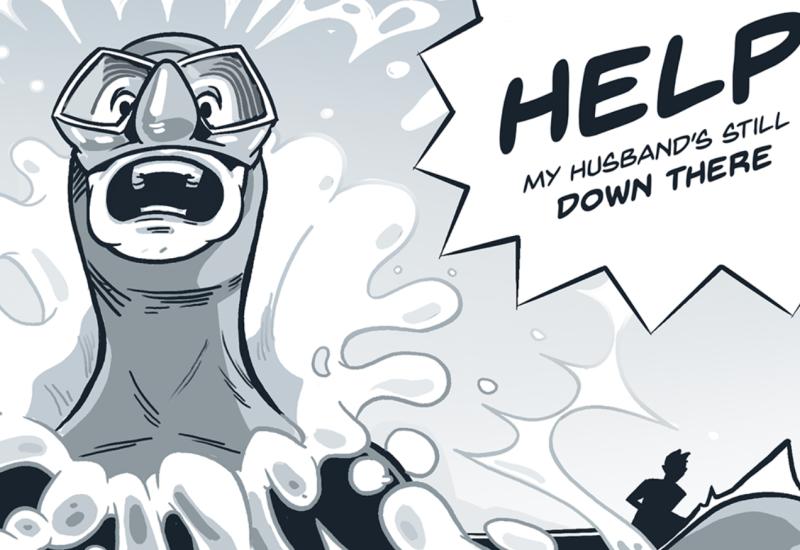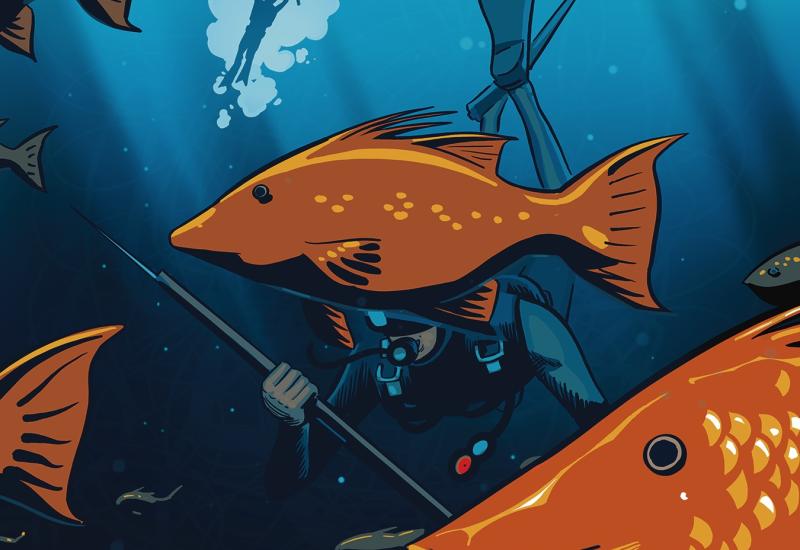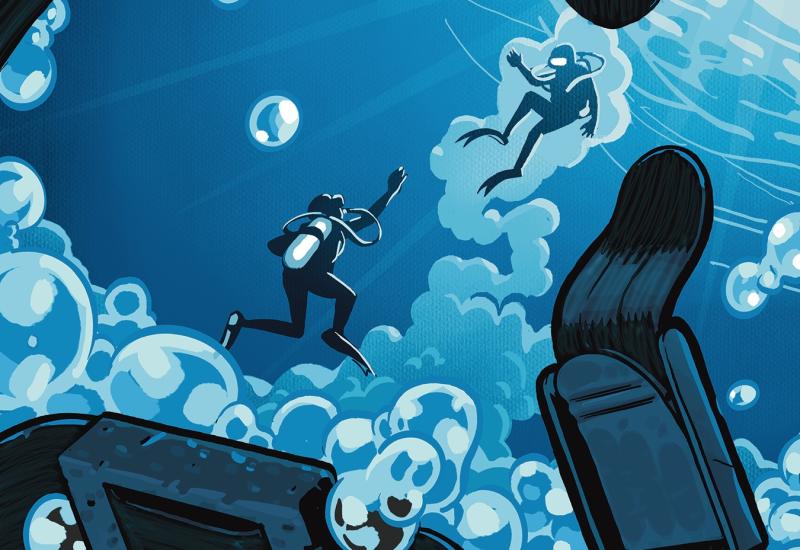Lessons for Life: Disobedience Spells Disaster

Disobedience Spells Disaster
Divers should never enter overhead environments without the proper training.
Jori Bolton
Al and Ray swam into the cave system, just a little way, to see what all the fuss was about. Their instructor had told them not to, but they hadn’t seen any harm in going just inside the opening. There was only one way in and out, right? After several minutes, Ray looked behind him. He couldn’t see the entrance. He didn’t know how to get back to the surface.
THE DIVERS
Al and Ray didn’t know each other well. Al was 35 and Ray was 19. Al had a full-time job and a family. Ray was a part-time student and single. During their certification course, they buddied up and hit it off because both were excited about diving. During their surface intervals, they talked about exploring wrecks and reefs, not just the freshwater springs in their backyard. Throughout the training dives, the two men pushed each other, not wanting to be outdone. Both Al and Ray laughed and joked, but it was obvious they were competing.
THE DIVE
That morning, when Al and Ray checked in, they saw pictures of divers inside the cave system. They both expressed interest in cave diving, but their instructor told them they would need a lot of experience before they’d be able to enroll in a cave certification course. He explained that the course would teach them how to enter the cave system safely.
Following their final open-water check-out dive on Sunday morning, Al and Ray’s instructor told them he would make a dive or two that afternoon with another student. The instructor explained that because they were certified divers, they weren’t under his care anymore, but that they were welcome to make the afternoon dives. Al and Ray told the instructor they planned to follow him and the student throughout the dive. Privately, though, they agreed that if the instructor went back to the same places they had already visited, they would explore on their own.
That afternoon, the instructor briefed Al, Ray and his student on the freshwater spring they’d be diving. He stressed that they were not qualified or prepared to enter the cave system off to one side of the spring. He said that divers died by making unplanned and untrained cave dives.
Al and Ray followed their instructor and his student around the open-water portion of the spring for about 10 minutes, but they quickly tired of seeing the same places. When the instructor was focused on his student, Al and Ray split off on their own. The instructor didn’t notice them leaving but wasn’t surprised when he realized they were gone. They were certified divers; he was no longer responsible for them.
THE ACCIDENT
After exploring the open-water areas of the spring on their own, Al and Ray made it to the entrance of the cave system. Freshwater flowed from an underground series of caves that extended miles underground through the limestone bedrock that made up most of the state. Many of the caves in the area had been explored, and many of them had permanent safety lines installed — but not all of them.
Slipping inside the cave, both men were cautious. They moved slowly, allowing their eyes to adjust to the reduced light. Neither diver was carrying a light; the spring’s management forbade divers to carry dive lights if they lacked the appropriate training to enter the caves. It was a way to discourage untrained divers from entering the cave system.
Al and Ray looked at each other and grinned, feeling the adrenalin of doing something new, as well as the excitement of doing something they knew they were not supposed to do. They moved farther and farther inside the cave, leapfrogging each another. When Ray realized he couldn’t see the exit any longer, he knew they were in trouble. He grabbed Al’s fin to get his attention. The older diver turned, and Ray gestured toward the opening, signaling his confusion about which way to exit. Al shrugged — he didn’t know, either.
ANALYSIS
The outcome of this accident is as preventable as it is predictable. Both divers died inside the cave system. Their bodies were recovered the next day, about 500 feet from the entrance. The cause of death was ruled “drowning due to insufficient air, entrapment in cave.” While that might be the cause, the contributing factors that led to both men dying included making mistakes and bad choices.
Any time you enter an overhead environment — where there is something between you and the surface — you have moved beyond the realm of traditional recreational diving. This includes diving in cave systems, penetrating wrecks and diving under ice. It also includes decompression diving, where you might be able to see the surface, but the need for decompression prevents a direct ascent. Traditional open-water-certification courses do not train divers to handle overhead environments. There are specific courses for each of those overhead environments that address their unique circumstances.
Because neither Al nor Ray survived the dive, we’ll never know exactly what their last few minutes were like, but it is fairly easy to imagine. They searched for a few minutes, trying to find the way out, growing more and more nervous. At some point, panic set in. Their breathing became heavy, and their actions became erratic. It wasn’t the cause of death, but Ray had a contusion on his head, most likely from hitting it on the roof of the cave or on a low-hanging rock.
It’s been said that watching your pressure gauge drop to zero is no way to spend the rest of your life. Al and Ray took their lives into their own hands when they entered the cave system unprepared, and they paid the ultimate price. Effectively, they spent the last few minutes of their time on Earth panicked, afraid, and staring at their pressure gauges while they dropped into the red zone. They knew they were going to die, and there was nothing they could do about it.
Eric Douglas co-authored the book Scuba Diving Safety, and has written a series of dive-adventure novels and short stories. Check out his website at booksbyeric.com.
More Lessons for Life:
Panic in Kelp | Helping Hand? | Wounded Grouper Strikes Back | Solo Diver Never Resurfaces

Jori BoltonDivers should never enter overhead environments without the proper training.
Al and Ray swam into the cave system, just a little way, to see what all the fuss was about. Their instructor had told them not to, but they hadn’t seen any harm in going just inside the opening. There was only one way in and out, right? After several minutes, Ray looked behind him. He couldn’t see the entrance. He didn’t know how to get back to the surface.
THE DIVERS
Al and Ray didn’t know each other well. Al was 35 and Ray was 19. Al had a full-time job and a family. Ray was a part-time student and single. During their certification course, they buddied up and hit it off because both were excited about diving. During their surface intervals, they talked about exploring wrecks and reefs, not just the freshwater springs in their backyard. Throughout the training dives, the two men pushed each other, not wanting to be outdone. Both Al and Ray laughed and joked, but it was obvious they were competing.
THE DIVE
That morning, when Al and Ray checked in, they saw pictures of divers inside the cave system. They both expressed interest in cave diving, but their instructor told them they would need a lot of experience before they’d be able to enroll in a cave certification course. He explained that the course would teach them how to enter the cave system safely.
Following their final open-water check-out dive on Sunday morning, Al and Ray’s instructor told them he would make a dive or two that afternoon with another student. The instructor explained that because they were certified divers, they weren’t under his care anymore, but that they were welcome to make the afternoon dives. Al and Ray told the instructor they planned to follow him and the student throughout the dive. Privately, though, they agreed that if the instructor went back to the same places they had already visited, they would explore on their own.
That afternoon, the instructor briefed Al, Ray and his student on the freshwater spring they’d be diving. He stressed that they were not qualified or prepared to enter the cave system off to one side of the spring. He said that divers died by making unplanned and untrained cave dives.
Al and Ray followed their instructor and his student around the open-water portion of the spring for about 10 minutes, but they quickly tired of seeing the same places. When the instructor was focused on his student, Al and Ray split off on their own. The instructor didn’t notice them leaving but wasn’t surprised when he realized they were gone. They were certified divers; he was no longer responsible for them.
THE ACCIDENT
After exploring the open-water areas of the spring on their own, Al and Ray made it to the entrance of the cave system. Freshwater flowed from an underground series of caves that extended miles underground through the limestone bedrock that made up most of the state. Many of the caves in the area had been explored, and many of them had permanent safety lines installed — but not all of them.
Slipping inside the cave, both men were cautious. They moved slowly, allowing their eyes to adjust to the reduced light. Neither diver was carrying a light; the spring’s management forbade divers to carry dive lights if they lacked the appropriate training to enter the caves. It was a way to discourage untrained divers from entering the cave system.
Al and Ray looked at each other and grinned, feeling the adrenalin of doing something new, as well as the excitement of doing something they knew they were not supposed to do. They moved farther and farther inside the cave, leapfrogging each another. When Ray realized he couldn’t see the exit any longer, he knew they were in trouble. He grabbed Al’s fin to get his attention. The older diver turned, and Ray gestured toward the opening, signaling his confusion about which way to exit. Al shrugged — he didn’t know, either.
ANALYSIS
The outcome of this accident is as preventable as it is predictable. Both divers died inside the cave system. Their bodies were recovered the next day, about 500 feet from the entrance. The cause of death was ruled “drowning due to insufficient air, entrapment in cave.” While that might be the cause, the contributing factors that led to both men dying included making mistakes and bad choices.
Any time you enter an overhead environment — where there is something between you and the surface — you have moved beyond the realm of traditional recreational diving. This includes diving in cave systems, penetrating wrecks and diving under ice. It also includes decompression diving, where you might be able to see the surface, but the need for decompression prevents a direct ascent. Traditional open-water-certification courses do not train divers to handle overhead environments. There are specific courses for each of those overhead environments that address their unique circumstances.
Because neither Al nor Ray survived the dive, we’ll never know exactly what their last few minutes were like, but it is fairly easy to imagine. They searched for a few minutes, trying to find the way out, growing more and more nervous. At some point, panic set in. Their breathing became heavy, and their actions became erratic. It wasn’t the cause of death, but Ray had a contusion on his head, most likely from hitting it on the roof of the cave or on a low-hanging rock.
It’s been said that watching your pressure gauge drop to zero is no way to spend the rest of your life. Al and Ray took their lives into their own hands when they entered the cave system unprepared, and they paid the ultimate price. Effectively, they spent the last few minutes of their time on Earth panicked, afraid, and staring at their pressure gauges while they dropped into the red zone. They knew they were going to die, and there was nothing they could do about it.
Eric Douglas co-authored the book Scuba Diving Safety, and has written a series of dive-adventure novels and short stories. Check out his website at booksbyeric.com.
More Lessons for Life:
Panic in Kelp | Helping Hand? | Wounded Grouper Strikes Back | Solo Diver Never Resurfaces










